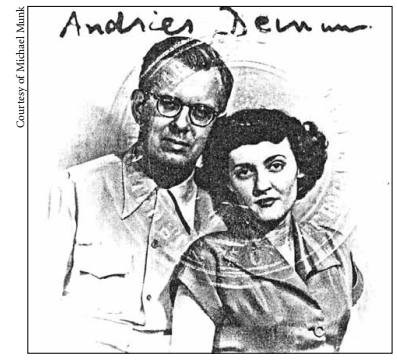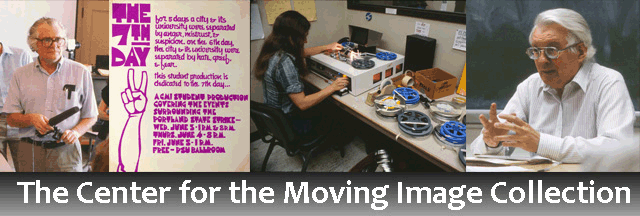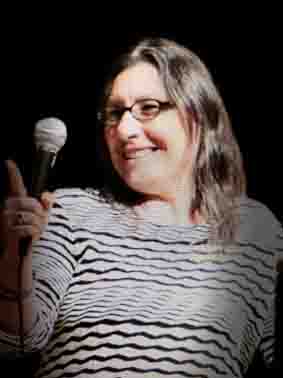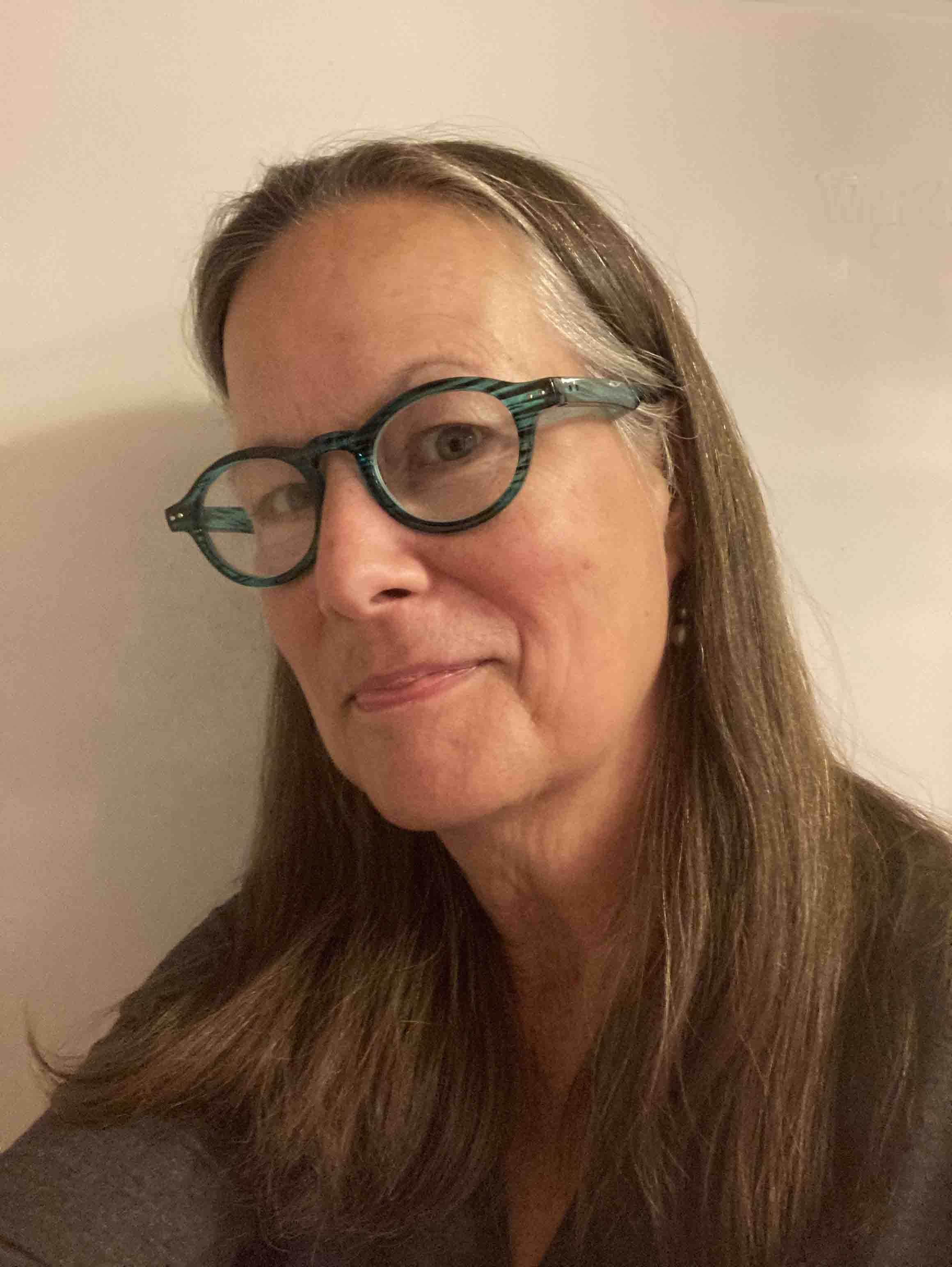

After some 80 years after it was written by Ivens, a bound typoscript of his first autobiography The Camera and I, was found in Portland, Oregon, USA. Ella Thomas, who is for 32 years Director of Education for the Northwest Film Center, the Northwest region's largest and most comprehensive film arts organization, writes how she found it:
The heritage of Andries Deinum
‘My Head of Faculty for twenty years was Bushra Azzouz, who was born in Iraq and came to the US to study theatre at Reed College in the early 1970s. In 1978, she took a community education class in cinema at the Portland Extension Center taught by Andries Deinum, a Dutch emigre (born in 1918 in Workum, Friesland) who had moved to Portland after being fired in 1955 from a faculty position in the film department of the University of Southern California for refusing to cooperate with the House Un-American Activities Committee (basically, for being a Communist).* The class, and Deinum, initiated Bushra's long career as an activist, educator and experimental documentary filmmaker.
According to a biography of Deinum by Heather Petrocelli, Deinum's interest in film developed during childhood, when, "at eleven years old, he saw thirty-year-old renowned Dutch filmmaker Joris Ivens making his film Zuiderzee." The source is a letter Deinum wrote to Norman Gunter Dyhrenfurth in 1950. In the letter Deinum also states that he and Ivens later became friends. Ivens may have given Deinum the "half book" document at some point in the 50s or 60s. The two certainly shared many of the same ideals and struggles.

André Deinum an dhis second wife Virginina Hammond, 1953. Cover Ivens'first autobiography, 1969. 
A photo colage of the Center for the Moving Image, founded by Andries Deinum (portrait photo at the right side)
Deinum's teaching career ended in 1981 when the film program at the Portland Extension Center that he helped to build was suddenly eliminated due to lack of funds. He lived the rest of his life as something of a recluse in Portland, but continued to have close relationships with many of his students, including Bushra (I never met Deinum personally but I have known and worked with many who were influenced by him). Perhaps he and Bushra talked about Ivens and the manuscript at some point before Deinum's death in 1995. But that conversation, if it took place, is only ours to imagine.
Sadly, Bushra died in 2019. I have been actively involved in helping to finish and distribute her last documentary, A Midsummer Night's Dream In Prison, about the impact of a prison arts rehabilitation program. I have also been helping her husband, Andrew Larkin, to sort through her papers. He recently found the manuscript in a box of her books and gifted it, and its future, to me.’
Ella Thomas plans to ask if any scholars or archivists can help to piece this story together more definitively. In the meantime, she is enjoying the idea that Ivens, Deinum and Azzouz (Bushra) are possibly entwined kindred souls.
So far the story of Ellen Thomas. I do think Joris Ivens already gave this bound typoscript to Deinum already at the end of 1944. That's when Ivens left for Australia. Otherwise would be impossible, because Ivens was not around in the USA in the 1950s and 1960s. In fact after Ivens finalized his autobiography till the chapter of the Parkinsosn and Power and the Land, with the help of famous filmhistorian Jay Leyda and Hope Corey, he more or less secured the places where he could retrieve his texts.,
* One of the problems for the HUAC was that Andries Deinum was a friend of Joris Ivens, who he met during a lecture of Joris in Los Angeles during the war. In fact Deinum was rather proud of this friendship, although he lost his job at the California University for it.

Bushra Azzouz Ellen Thomas